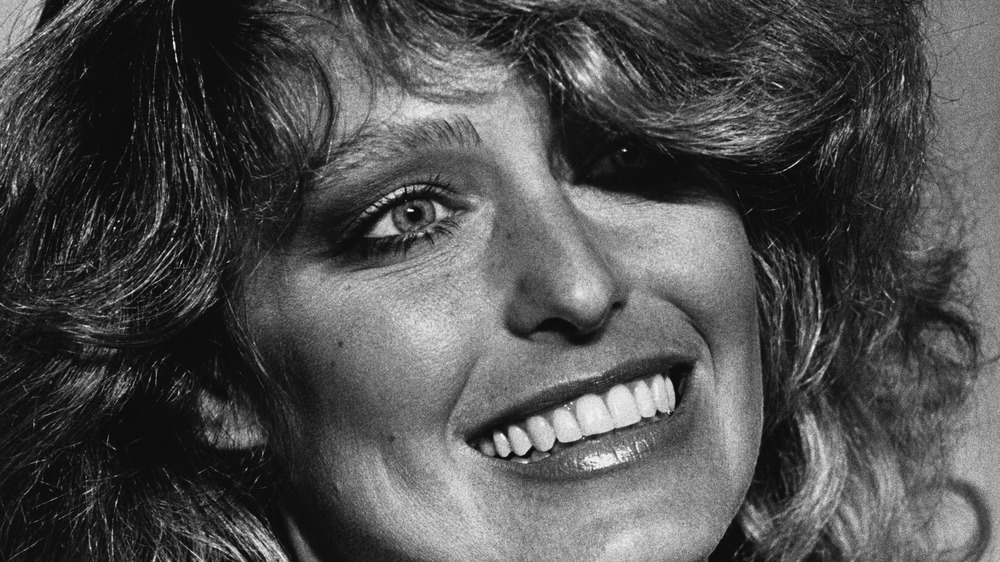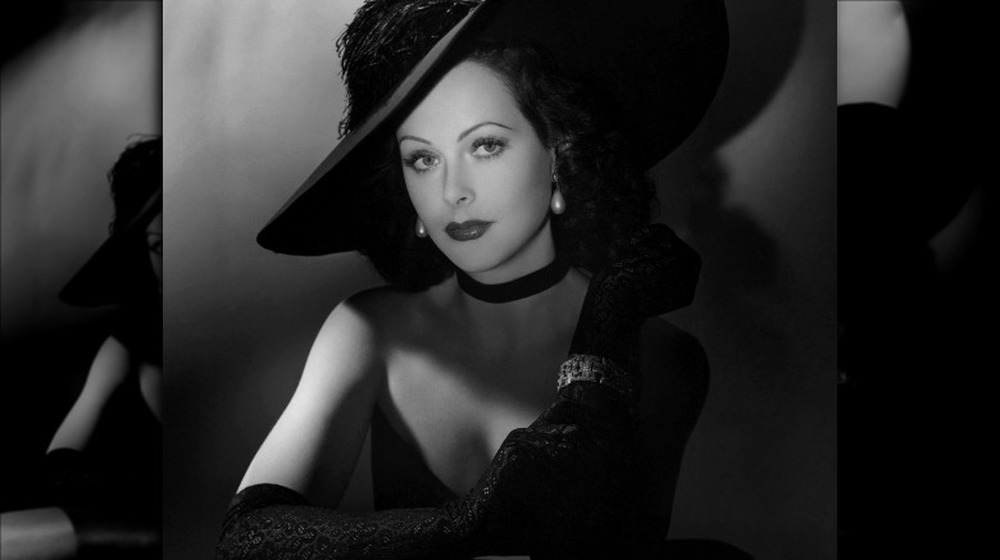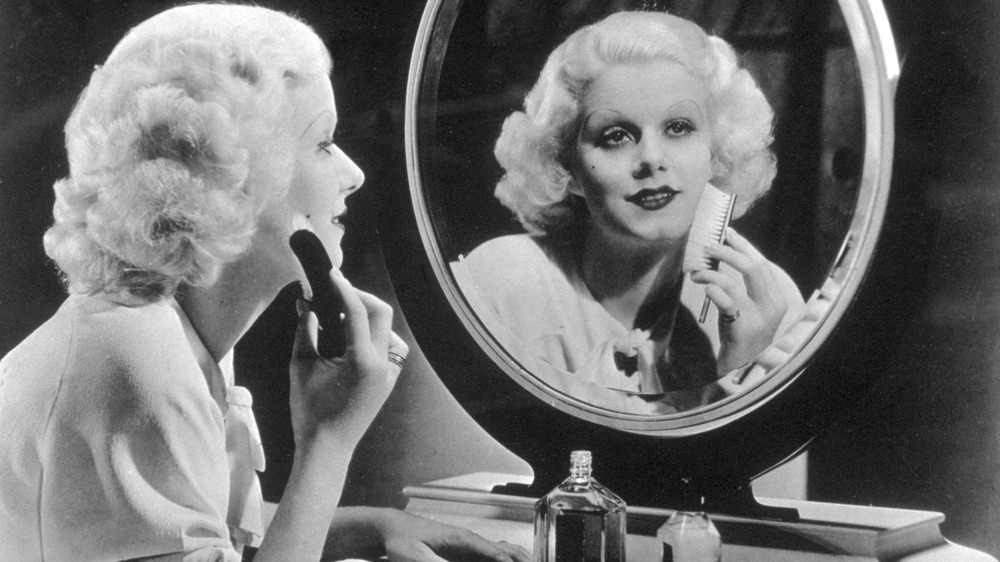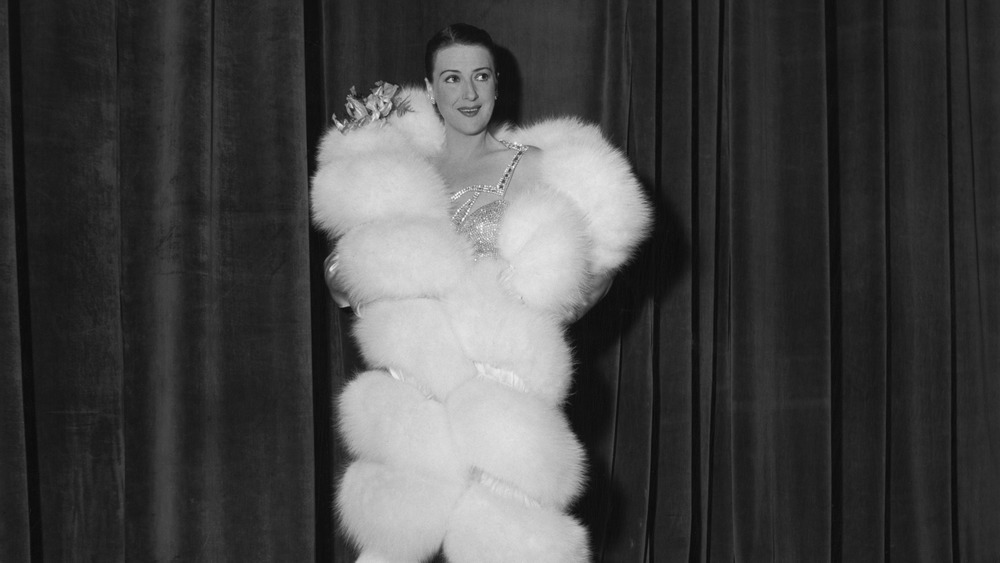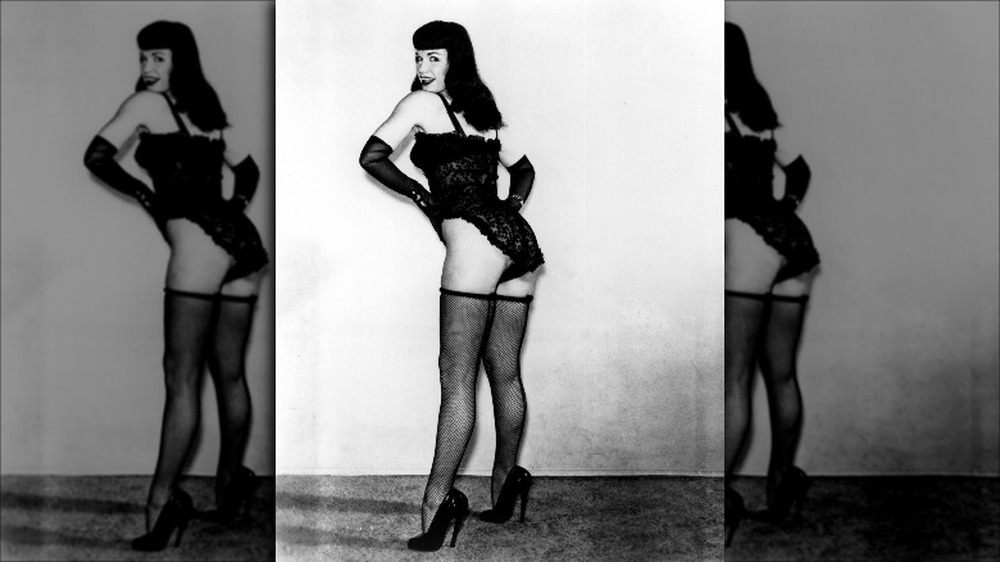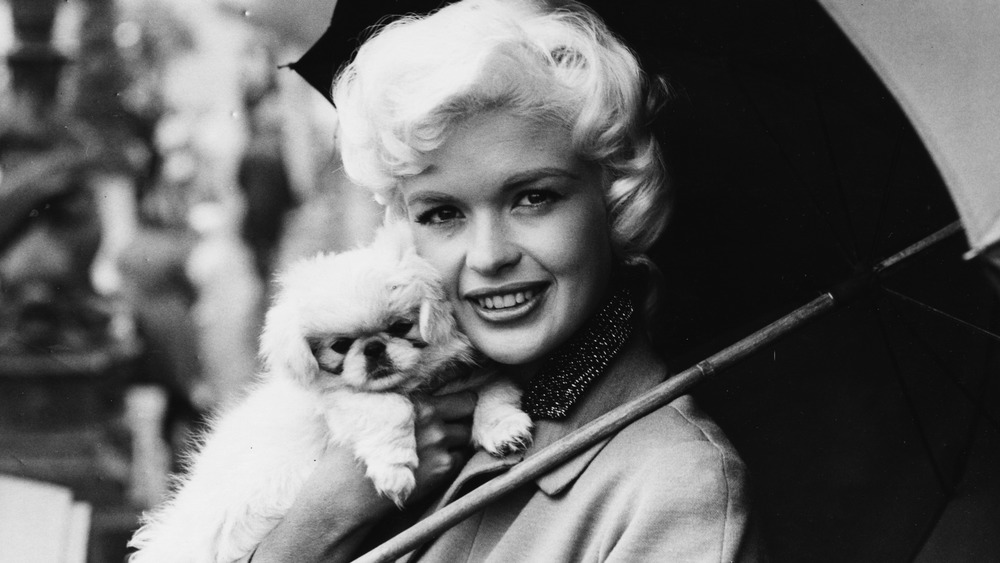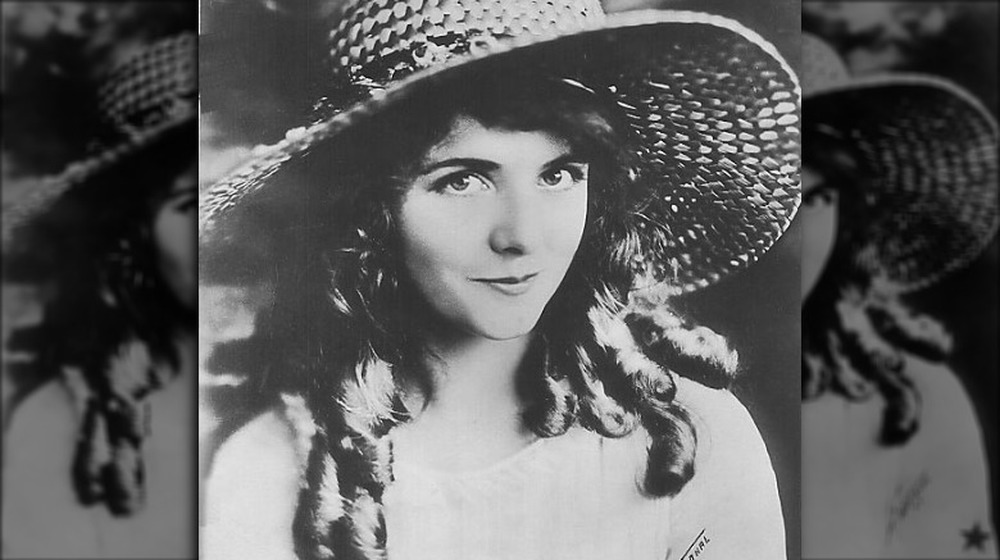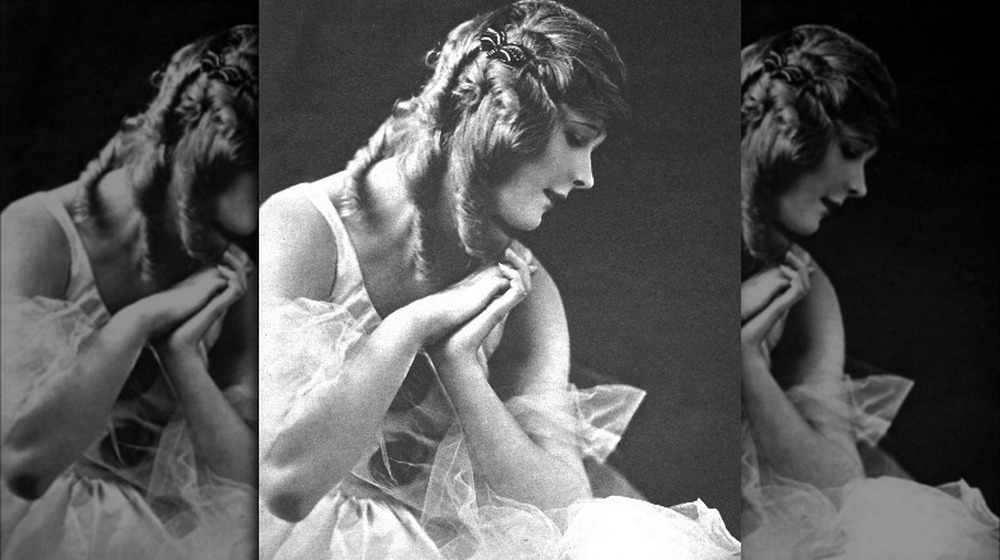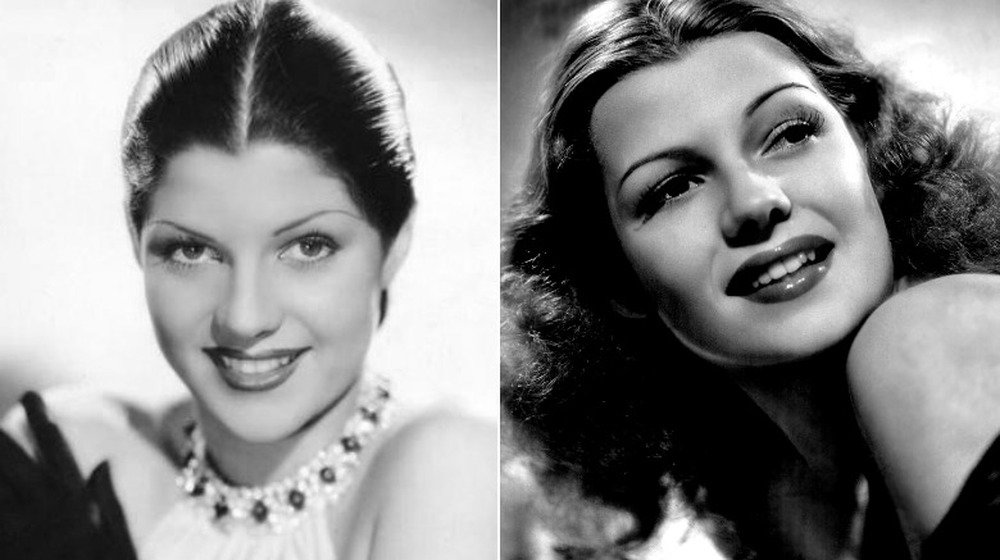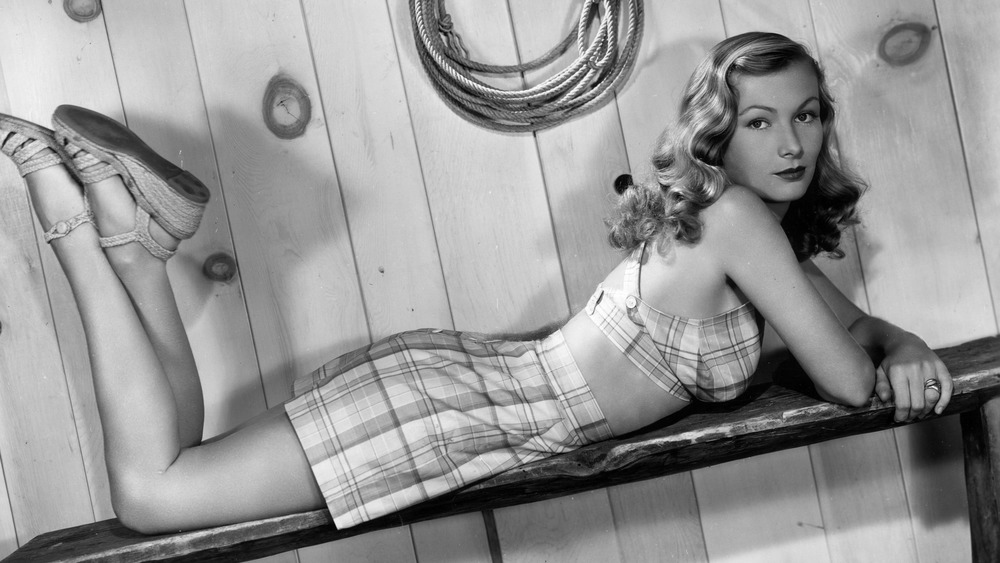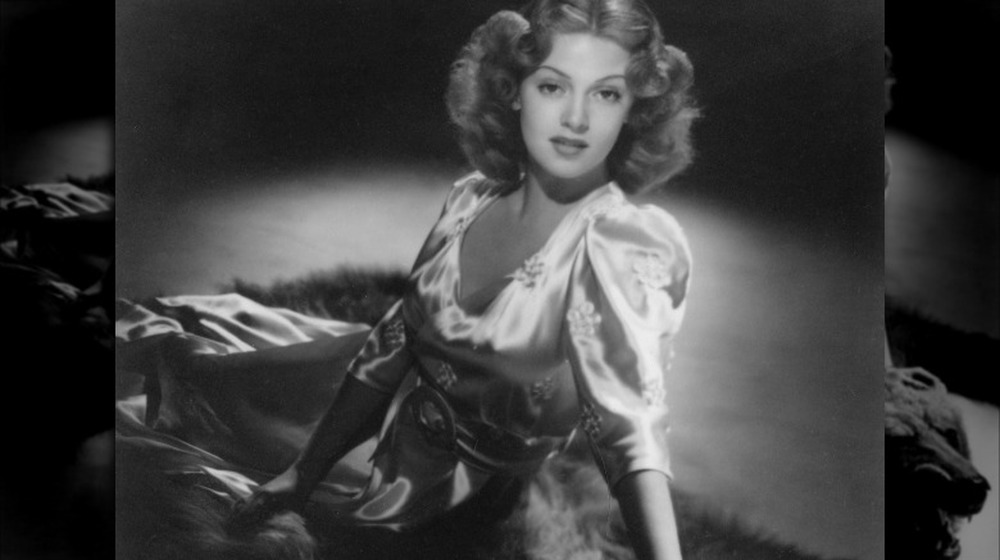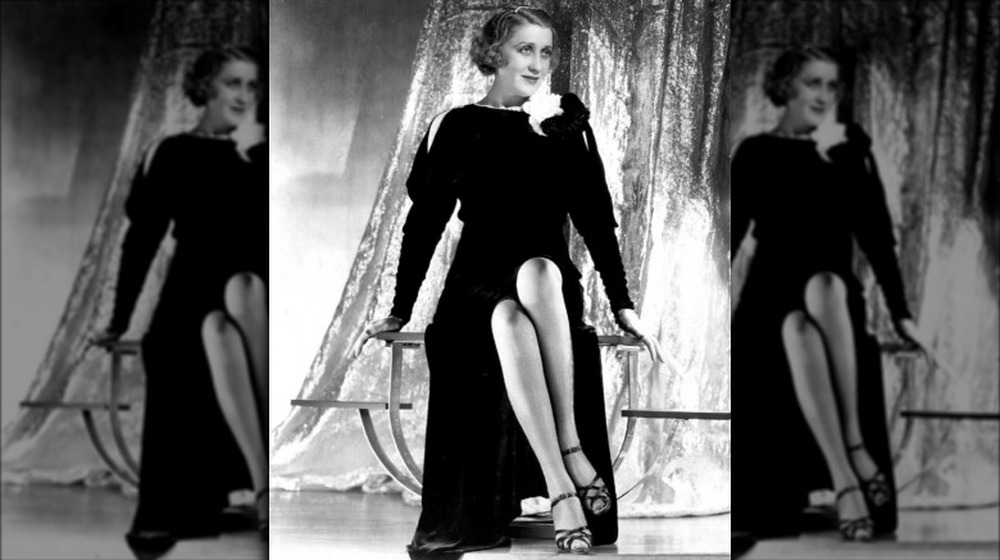Classic Pin-Ups With Incredibly Tragic Stories
It seems like pin-up models would have the life. They're beautiful, glamorous, and have the world at their fingertips. Right?
Not exactly. Look behind those seductive smiles and you'll find that many of the world's most famous pin-ups had incredibly tragic life stories — some are so heartbreaking that it's a wonder they could even smile at all.
Hollywood is a rough town, and in order to make it to the top, it requires a certain amount of toughness. And these women had it: behind the make-up, the bathing suits, and the lingerie that was photographed and plastered all over bedroom walls (and carried through the trenches and battlefields of World Wars), there was often a core of pure steel. Their stories are stories of mental and physical abuse, childhood trauma, failed marriages, exploitation, alcohol, and in many cases, an untimely death. Let's look behind the masks worn by these famous faces.
Hollywood's brilliant star
Hedy Lamarr was born in 1914 as Hedwig Eva Kiesler, and the National Women's History Museum says that from a young age, her scientific mind was encouraged by her father while her mother — a concert pianist — was behind her introduction to and love of the arts. That becomes important later, but first, her cinematic breakthrough. At 18-years-old, she was featured — nude — in a controversial film called Ecstasy. (It was so controversial it would later be banned by Hitler (via Sky History), and Pope Pius XII.) It (and a play called Sissy) got the attention of the man she would marry: Austrian arms dealer Fritz Mandl.
Miserable in her marriage, she fled (via Jewish Standard): first to Paris, then to the US. A chance meeting with MGM Studios' Louis B. Mayer kicked off her career, but she wanted more, famously saying: "Any girl can be glamorous. All you have to do is stand still and look stupid."
Lamarr started problem-solving: she convinced Howard Hughes that airplane wings should be angled backwards, and invented a guidance system for torpedoes. Unfortunately, they were inventions that she never got recognition or recompense for during her lifetime (via Smithsonian), even though it laid the groundwork for the WiFi technology we use today. By 1958, her career was in a downward spiral, and by 1966, she was a common tabloid headline. She died in 2000, 85-years-old and a recluse.
A blonde bombshell, a dead husband, and a mysterious other wife
By the time she was 22-years-old, Jean Harlow was one of the most famous women in the world. At first, she was known for her looks. It was only after she met an MGM exec named Paul Bern that she got her chance to be a serious actress, and according to SF Gate, their relationship was about more than business. They were married in 1932, but it was a short-lived union. Just two months later, household staff discovered his body. The cause of death was a gunshot.
Even as MGM's fixers tried to put a stop to all the rumors and release a story of their own, more details started to come out. Harlow, it turned out, was Bern's "other" wife. He had also been married to Dorothy Millette, an actress who had been committed to an East Coast sanitarium before Bern had headed to California. Hearing the news of his death — which was ruled a suicide — Millette jumped off of a riverboat in San Francisco, and her body was recovered shortly after.
Harlow, meanwhile, remarried and divorced, but something more devastating than failed relationships was happening behind the scenes. In 1937, she was filming Saratoga when she fainted. Her flu symptoms worsened to include blindness, and less than a week later, she died of kidney failure.
The original showbiz child star
The Wall Street Journal calls her the "First Lady of Striptease", and said she wasn't just the most famous stripper in the world, but a "part of the American mythos." Her act was, The Guardian says, declared "pure American art." Everyone knew her as Gypsy Rose Lee, but she was born Louise Hovick — and it's entirely possible she wouldn't have had a career on stage at all if it wasn't for her mother, Rose. In spite of the fact that Rose regularly condemned her first-born daughter as being talentless "excess baggage," Louise was made to sing and dance — literally — for her dinner. Alongside her was her younger sister, June, who was just 2-years-old.
June was around 16 when she'd had enough of their mother and ran off, leaving Louise to fend for herself. By then, it was the 1930s and the vaudeville stage they had relied on was fast fading, so Rose started booking her daughter into burlesque theaters and telling her that if she wanted to make a living, she'd better get naked. She was 17-years-old.
Rebranded as Gypsy Rose Lee, she skyrocketed to fame as a stripper, but her relationship with her mother was always complicated — so complicated that no one's quite sure which of her claims were fact and fiction. She died at 59, and when she was diagnosed with cancer, she said it was "a present from Mother."
Queen of the Pin-ups
When The New York Times reported on Bettie Page's death in 2008, they called her "Queen of Pinups." She was 85-years-old at the time of her death, and even though her image had seen something of a resurgence in popularity, her star had faded long ago. It had faded in 1957, to be precise. That's when — at the pinnacle of her career — she vanished from the public eye.
Her obituary noted that not many knew what had happened to her in the decades she was out of the limelight, and it's heartbreaking stuff. Letters written between her and her sister, Goldie, (via Fox News) shed light on her problems: she described breakdowns and symptoms of her diagnosis without ever mentioning "schizophrenia," and made the occasional headline for public, violent outbursts. She struggled with worsening arthritis, was committed several times, and in 1972, was found not guilty by reason of insanity after attacking her landlord and threatening him with a knife.
She struggled with her weight (likely partially caused by the antipsychotic medications she was on), with the reality of getting older, and the shame she felt for being a sex symbol. It's no wonder: she said her father had molested her and her sisters. Later in life she refused to be photographed, saying, "I want to be remembered as I was when I was young and in my golden times."
When tragedy becomes pop culture myth
It's a popular bit of Hollywood pop culture: blonde bombshell Jayne Mansfield was beheaded in a terrible traffic accident. But that grisliest detail of her tragic death entered into history because of some misreporting.
First, the myth: Jim Roberts was the undertaker who reconstructed Mansfield's face and body before her funeral, and told The New York Times that, "Her head was attached as much as mine is." But still, he says that what happened to her was "as bad as you get in this business." The story about the beheading happened after reporters caught a glimpse of her wig, which had been thrown from the car on the impact with the back of an 18-wheeler. (The cause of the accident was a mosquito-spray truck that covered everything in a blurry fog.)
Roberts still laments the way pop culture gets her wrong, and said that she was such a devoted mother that "she couldn't stand to be away from her children." And on the night she was killed, they were with her. In the back seat of the car were 8-year-old Mickey Jr., 6-year-old Zoltan, and 3-year-old Mariska. And yes, that's Mariska Hargitay of Law & Order: SVU. Hargitay explained to People, "The way I've lived with loss is to lean into it. As the saying goes, the only way out is through. [...] She's with me still."
The Most Beautiful Girl in New York
Olive Thomas was born in 1894, and she just wasn't cut out for a life of marriage at 16 and a job selling gingham. It wasn't long after she married that she left Pennsylvania for New York City, and just decided that she wasn't going back.
According to Medium, it was 1911 when she entered artist Howard Chandler Christie's contest to find The Most Beautiful Girl in New York. From there, it wasn't long before she was posing — occasionally nude — for some of the era's most famous artists, joined the Ziegfeld Follies, and signed a movie deal. Along with her blossoming career as a silent film star, she made a name for herself as the industry's wild child — a name that only became more notorious when word leaked that she'd married Jack Pickford. Their marriage was a rocky one, and in 1920 they headed to Paris (in the wake of another scandal) for a second honeymoon.
Tragedy joined them. They were staying at The Hotel Ritz when Thomas — looking for something to get rid of a headache — took a drink from a bottle she thought contained aspirin. It didn't: it was mercury bichloride, a topical medicine her husband was using to treat his syphilis. Doctors arrived and immediately pumped her stomach, but Timeline says that by the time she made it to the hospital, she was already blind and her vocal chords were disintegrating. She died five days later, just 25-years-old.
No Cinderella-story for this 'It-Girl'
Classic Movie Hub says that Marilyn Miller was the "It" girl of the decade between 1918 and 1928. She'd come a long way: she grew up as part of a travelling theater act that had captivated America, then headed to Broadway, became a part of the Ziegfeld Follies, and swore to never let a man run her life the way that her stepfather had.
While she was with the Ziegfeld Follies, she fell madly in love with her co-star, Frank Carter. The pair eloped, and by all accounts, it was a match made in heaven. Carter had planned on giving her a car for their first anniversary, and it was that car that he was driving home when he lost control and was killed. Miller spiraled into a deep depression and despondency, even as she continued to perform. Every performance ended in tears... until it didn't. She soon spiraled off into another extreme: hedonistic and demanding at work, scandalous about town.
That scandal rose to new levels when news broke that she was engaged to Jack Pickford, who had just lost his wife — Olive Thomas — in a still-suspicious set of circumstances. The marriage was one filled with infidelity, alcohol, and violent outbreaks, and ended in divorce. Her career survived and she signed with Warner Brothers, but in 1936, her ever-worsening sinusitis was unbearable. After chasing a miracle cure (an injection of insulin), she fell into a coma and died. She was 37.
The red swimsuit
The image that became the best-selling poster of all time was hand-picked from a score of images done in a surprisingly casual photo shoot, and it was Farrah Fawcett herself who selected the iconic image of her in a one-piece red swimsuit. The swimsuit, says Biography, is now in the Smithsonian, and the poster has sold more than 12 million copies.
Fawcett may have embodied a girl-next-door sort of wholesomeness, but her relationship with Ryan O'Neal was complicated and best be summed up by his comment to Vanity Fair: "When she turned 60, we had this celebratory birthday where I shot my son. I could have hit him, but I missed. Farrah was lying in bed, and she could hear it all — fights, swinging, gunshots. Welcome to the O'Neal's!"
Even though she made the jump from pin-up and Charlie's Angel to serious actress, the public was more interested in the scandal — and there was a lot of it. She and O'Neal — along with their children — regularly made headlines with stories of arrests, drug abuse, infidelity, and stays in and out of rehab clinics. Then, in 2006, she was diagnosed with cancer. For three years, she didn't just fight, but she filmed her fight. The footage, says The Guardian, is graphic, raw, and painful. Fawcett insisted it all be documented, in order to send a message about the necessity of early detection and continued research. She died on June 25, 2009 (via Good Housekeeping).
The pin-up model who changed everything to be famous
No one remembers the name Margarita Carmen Cansino. Everyone remembers the woman she grew up to be, though: Rita Hayworth. According to Vanity Fair, Hayworth was born in 1918 and by 1931, her down-on-his-luck father decided to dye her hair, accent her "Latin" features, and teach her to dance and perform. And they did — and the mental and physical abuse remained off-stage.
She married in 1937, and she later said husband Eddie Judson saw her as "an investment." It was Judson who insisted she get electrolysis to change her hairline, dye her hair (pictured before and after), and sleep with Columbia Studio execs in exchange for priority treatment. (She refused.) She then met and married Orson Welles, and her preoccupation with keeping his affections didn't work — she was pregnant when Welles left her to hook up with a Vanderbilt. Her happy marriage descended into misery, and her next marriage — to Prince Aly Khan, who had already been married when they met — would tarnish her image forever. Her next marriage was to Dick Haymes — nicknamed "Mr. Evil," — and it wasn't long after her divorce that she started having trouble remembering her lines.
Forced to shoot her movies one line at a time, she found her career over. While friends and family blamed alcoholism, the truth was much different: in 1980, she was finally diagnosed with Alzheimer's. She died seven years later, at age 68 (via the LA Times).
The fall of World War II's most iconic pin-up girl
It was Veronica Lake's blonde hair and distinctive style that made her popular with WWII GIs. She was at the height of her popularity as a pin-up and actress in the 1940s, spent some time chasing success on England's stage scene, and by the 1970s, she had overseen the ghost-writing of a memoir that told of her fall.
And it was a hard, long fall. In the early 1960s, the LA Times says she was discovered working in New York as a cocktail lounge waitress. She denied she had fallen on hard times, and insisted that she'd gotten out of Hollywood of own accord. She was quoted as saying, "And when it became clear to me that the only way to survive was to get out, I left."
Survival was a struggle. When The Hollywood Reporter columnist Sue Cameron interviewed her (via Fox News) around the publishing of her tell-all book, she found a woman that was little more than a shell of her former self. Diagnosed with schizophrenia as a child, she had reportedly turned to self-medicating with alcohol. The final insult came when she was given a star on the Walk of Fame... and no one showed up. When she died of hepatitis in 1973 — just 51-years-old — she had nothing left. A friend paid to get her ashes, and spread them per her request.
The pin-up girl and the mob
Lana Turner was already known for her on-screen portrayals of the classically blonde femme fatale, and in a weird twist of fate, she became one in real life, too. According to Den of Geek, she had a long-standing association with the mob. Her father had been a bootlegger, and had been the target of a "gangland execution" when she was young. That hadn't stopped her from getting involved with a mob enforcer named Johnny Stompanato. Things got publicly ugly when she was filming a movie with Sean Connery, and after Stompanato watched them film a scene that included a steamy embrace, he pulled a gun on Connery — who (reportedly) punched him in the face.
When Turner decided to end her relationship with Stompanato once and for all, the relationship turned deadly. According to the LA Times, Turner's daughter, then-13-year-old Cheryl Crane, was home when the confrontation happened. The teenager stabbed and killed Stompanato, and after a headline-grabbing trial the killing was deemed "justifiable homicide."
There were still a lot of questions about just what happened: later, it would be rumored she had done it in self-defense, as he'd been abusing her. Regardless of what had happened behind closed doors, Turner continued to work in high-profile projects, including the popular show Falcon Crest. She died in 1995.
Married to the mob
Ruth Etting's star rose quickly, from her 1927 break into the Ziegfeld Follies to being an internationally recognized star by 1936. The LA Times says she was one of the biggest stars of the Jazz Age, and it looked like she was going to get even bigger — until a romantic scandal hit the headlines.
In late 1938, The New York Times was reporting on Etting's testimony against her former husband, Moe "Col. Gimp" Snyder. She had been visiting her pianist, Myrl Alderman, at his home when Snyder forced his way in, started waving around a gun, and then shot Alderman twice. Etting had been prepared for it: she'd given Snyder half her earnings in the divorce, but testified that he had still threatened to kill her.
At the time, Etting had been planning on marrying Alderman once her divorce was final, but Snyder wasn't the only one in the way. While they were going through the trial over the shooting, she was handed a "love theft suit" from Alderman's ex-wife, who was demanding $150,000 for getting in the way of their reconciliation. This story, at least, comes with some good news. Etting and Alderman were married, and by all accounts, it was a long and happy one.
